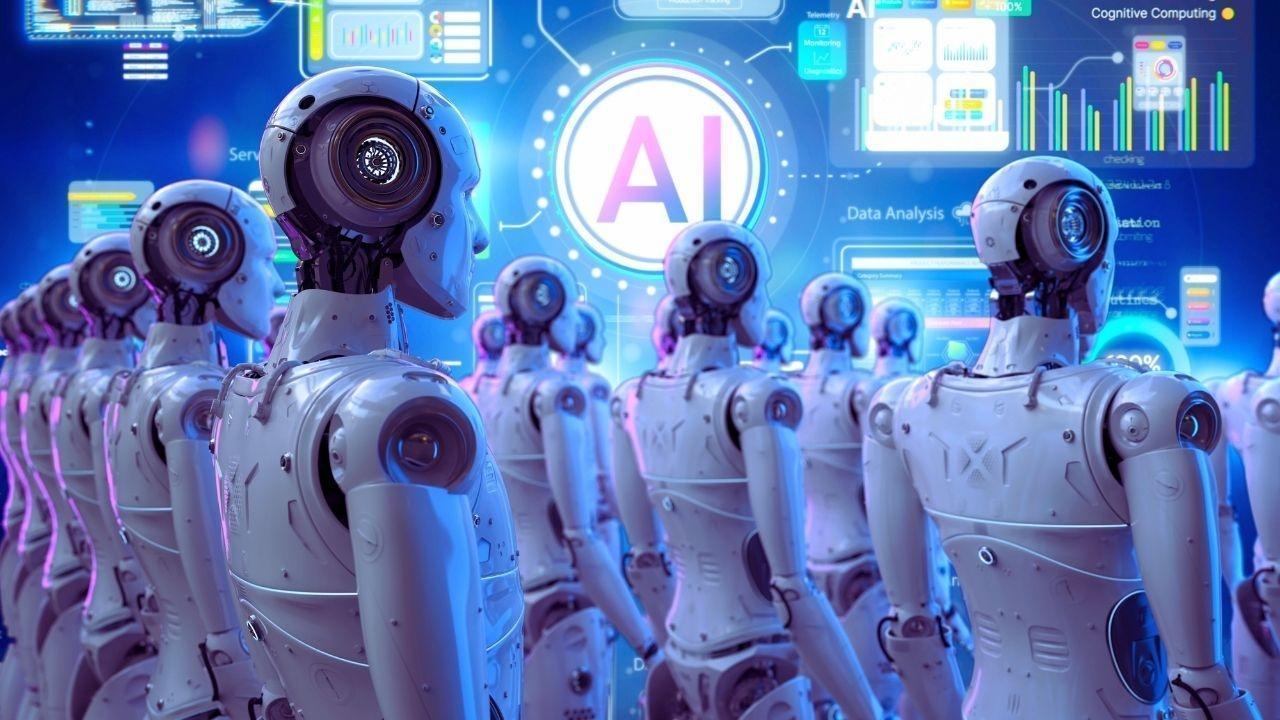
Post by : Anis Al-Rashid
For years, the collaboration between artificial intelligence and robotics primarily took place in research labs, with many breakthroughs remaining largely experimental. Today, a combination of advanced AI, sophisticated sensors, and improved hardware is enabling these systems to operate in the dynamic and unpredictable environments of the real world.
These autonomous robots are evolving beyond basic tools. They possess capabilities for perception, reasoning, and deliberate action. Thanks to AI algorithms that continuously learn from their experiences, these robots can navigate their surroundings, make informed decisions, and respond effectively to unexpected occurrences. This shift from lab environments to actual deployment marks a pivotal evolution in the field of robotics.
A range of technological innovations has set the stage for the utilization of autonomous robots:
Cutting-Edge AI Algorithms: Advanced techniques such as deep learning and reinforcement learning enable robots to identify objects, predict human actions, and make real-time decisions.
Integrated Sensors: Technologies like Lidar, radar, and high-def cameras offer three-dimensional awareness, allowing robots to detect obstacles and navigate effectively.
Local Data Processing: Edge computing facilitates rapid decision-making, critical for immediate operational demands without reliance on distant servers.
Sophisticated Energy Management: Enhanced battery technology allows for extended operational durations, enabling sustained on-field processes.
Together, these innovations empower robots to undertake tasks that previously necessitated human intervention, significantly enhancing productivity and minimizing errors.
The manufacturing sector has spearheaded the application of autonomous robotics. AI-enhanced robots manage intricate assembly processes, collaborate with machinery, and adapt operations using real-time data. In logistics, these robots simplify warehouse tasks by moving goods, tracking inventory, and optimizing space usage.
Unlike older robotic systems that repeat the same functions, contemporary AI-integrated models constantly learn. They can identify damaged products, adjust to various sizes, and adapt to changing environments, resulting in reduced downtime and increased efficiency.
Healthcare too is witnessing a surge in autonomous robotics application. AI-operated surgical robots assist medical professionals with unparalleled precision, improving outcomes and reducing risks. Beyond surgeries, these robots manage repetitive tasks such as patient monitoring and medication handling.
For eldercare, autonomous technology aids mobility, medication reminders, and vital sign tracking. The blend of robotics and AI enhances healthcare services, particularly in settings facing staffing challenges.
Agriculture, traditionally labor-intensive, is being revamped with autonomous robotics in precision farming. AI-enabled machines are capable of seed planting, crop monitoring, pest detection, and irrigation management. Drones equipped with vision systems analyze extensive areas, providing timely data for crop health and yield predictions.
This technology not only boosts productivity but also curtails resource wastage, promoting sustainable farming practices.
Visible applications of robotics and AI can be seen in autonomous vehicles. Self-driving cars, delivery drones, and autonomous trucks use AI to manage navigation, obstacle detection, and adherence to traffic regulations.
Despite regulatory hurdles and safety issues, these vehicles illustrate the capability of robots to function safely in complex surroundings, aided by integration into smart city infrastructures.
While advancements are remarkable, deploying autonomous robots in the field presents challenges:
Environmental Variability: Robots must navigate unpredictable weather and complex human interactions.
Ensuring Safety: It is paramount that AI-driven systems make safe choices in real-time scenarios.
Data Dependence: The performance of autonomous systems hinges on extensive and unbiased datasets.
Ethical Considerations: Issues such as privacy and job displacement necessitate serious discussion as these technologies advance.
Addressing these challenges requires cooperative efforts among engineers, policymakers, and ethicists to foster responsible development.
The upcoming decade is poised for extraordinary growth in AI-driven autonomous systems. Innovations in machine learning and robotics will allow these systems to engage in more intricate tasks across sectors, working collaboratively alongside humans.
The adaptability of these robots will improve over time as they learn from real-world environments. Furthermore, the integration of cloud computing will enhance communication among robot fleets, promoting collective intelligence.
As autonomous robots transition from labs to practical use, societies will need to navigate their wider implications:
Transitioning Workforce: Job requirements will evolve, emphasizing skills in robotics management and AI oversight.
Need for Regulatory Measures: New regulations around safety and liability will be required.
Establishing Ethical Standards: Transparent decision-making processes will be necessary to maintain public trust.
Ensuring Accessibility: Equitable access to robotic technologies will help bridge gaps between different types of organizations.
Grasping these aspects is crucial to leverage the benefits of autonomous robots while mitigating associated risks.
Autonomous robotics is making the leap from experimental setups to everyday applications. Fueled by AI, these systems are poised to reshape industries and daily activities. The blend of cognitive and physical capabilities enables robots to adapt and operate in multifaceted environments.
Although challenges exist, including ethical considerations and regulatory needs, the potential is significant. The era of field-ready autonomous robots is upon us, heralding a future of enhanced collaboration between humans and machines.
This article is for informational purposes only, summarizing trends in the field of autonomous robotics and AI. It does not serve as professional advice. Readers should consult experts for specific implementations.










NBA Friday Highlights: Miami, Lakers, Milwaukee, and Clippers Triumph
Miami, Lakers, Bucks, and Clippers secure victories in thrilling NBA Friday games with standout perf

Doncic Dominates with 49 Points as Lakers Defeat Timberwolves 128-110
Luka Doncic scores 49 points to propel the Lakers past the Timberwolves 128-110; Reaves and Hachimur

Kings Narrowly Defeat Jazz 105-104 with Sabonis' Late Heroics
Domantas Sabonis' last-minute shot secures a thrilling 105-104 win for the Kings against the Jazz in

Argentina's Friendly Match with India Delayed, New Date to be Announced
Argentina's friendly against India in Kochi is postponed; a new date will be confirmed soon due to F

Rohit and Kohli Conclude ODI Journeys in Australia with a Win
Rohit Sharma and Virat Kohli close their ODI chapter in Australia with a win, partnering for an unbe

George Russell Dons Lucha Libre Mask at Mexican Grand Prix
George Russell sported a Lucha Libre mask to experience the Mexican GP stands while rookie Fred Vest